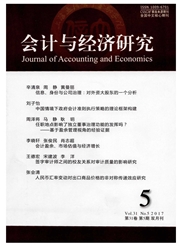

 中文摘要:
中文摘要:
文章采用投入产出和结构分解分析,定量分析了我国CO2排放增长的影响因素。结果表明,促进我国CO2排放增长主要因素是规模效应和结构效应,而起到抑制作用的因素只有效率效应。从最终需求角度看,资本投资和城市居民消费增加是CO2排放增长的两大主要来源,农村居民、政府消费和净出口的影响相对较小。从部门来看,机械设备制造业、旅客运输等服务业以及建筑业是CO2排放增长的三大部门。最后,针对实证结果提出了节能减排的政策建议。
 英文摘要:
英文摘要:
Using the analysis of input-output and structural decomposition, the paper quantifies the driving forces of China's CO2 emissions from 1992 to 2005. Results indicate that scale effect is the primary driver of growing CO2 emissions, efficiency effect is the main suppressive factor. From the perspective of the ultimate demand, capital investment and urban household consumption largely drive the increase of CO2 emissions. Consumption of rural household, and government and net export have a weak effect on total emissions. From the perspective of industries, CO2 emissions result mainly from industries of machine building, passenger transportation and construction business. At last, policies and suggestions are provided for energy conservation and emission reduction.
 同期刊论文项目
同期刊论文项目
 同项目期刊论文
同项目期刊论文
 期刊信息
期刊信息
